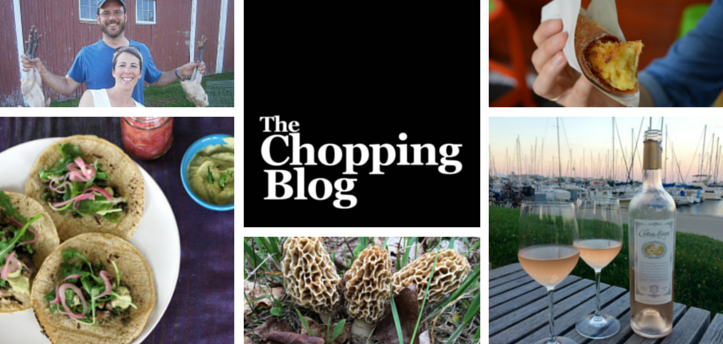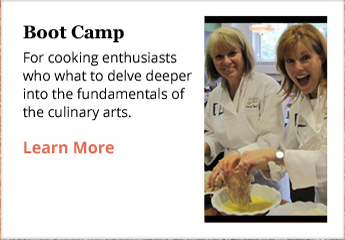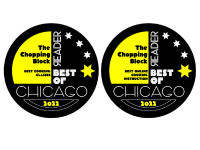We find ourselves in the early stages of high summer. This unfortunate circumstance comes with many downsides if you live in upstate New York. Blistering temperatures (hotter every year!), air thick as mayonnaise from humidity, a host of hostile insects intent on carving pieces of your flesh, groceries wilting in the time it takes to move them from car to refrigerator, fruit flies seemingly spontaneously generating from random places in the house, etc. But despair not, fair reader, for there are many redeeming aspects to this time of year as well. Chief among them is the ripening of delicious fruit.
We don't quite have larger stone fruit like peaches or plums, but we do have lots of different berries coming into season as well as my personal favorite fruit of the whole year: sour cherries.
There are lots of different ways to enjoy fresh in-season fruit. You could simply eat them out of hand, or top your morning oatmeal with them. You could cook them down and mix them into a sauce for ice cream or even a glaze for grilled meat. And of course, there is no “correct” or “best” way to enjoy the season’s fruit, but if there were, it might be the fruit pie. Every year I look forward to sour cherry season in particular because sour cherry pie might be my favorite thing to eat in the whole world. When it's done well there is really not a whole lot that can compare. On the flipside, however, there is little more disappointing than squandering the potential of some delicious sour cherries in a poorly made, or even mediocre pie, and there are lots of mediocre pies made every year. A social crisis, really.
 There are a few different ways a pie can go wrong, but ultimately they are simple pastries. If you have good fruit, the quality of the filling almost takes care of itself. In my experience, where most people are let down when it comes to pie making is in the crust. I’m no snob, and generally I’m all in favor of anything that gets people over the hump where they are making something at home that they might otherwise buy, but really there is no more surefire route to a mediocre fruit pie than using frozen store-bought crust. That may sound elitist but unfortunately there just are no store bought options that hold a candle to even a moderately well-executed homemade crust.
There are a few different ways a pie can go wrong, but ultimately they are simple pastries. If you have good fruit, the quality of the filling almost takes care of itself. In my experience, where most people are let down when it comes to pie making is in the crust. I’m no snob, and generally I’m all in favor of anything that gets people over the hump where they are making something at home that they might otherwise buy, but really there is no more surefire route to a mediocre fruit pie than using frozen store-bought crust. That may sound elitist but unfortunately there just are no store bought options that hold a candle to even a moderately well-executed homemade crust.
I think a lot of people find making pie crust intimidating because they’ve been told it's difficult, or they aren't used to making pastry in general, but it really isn't so bad if you follow a few simple guidelines. But really what can bring your crust making to new levels of deliciousness is something that has sort of fallen out of fashion in the last few decades, and that is to use lard to make your crust.
Lard used to be extremely common in pie crust making, but then it became a sort of vilified ingredient. Now the all-butter crust is so ubiquitous a lot of people seem to have forgotten lard was ever in the mix. Don't get me wrong, an all butter crust can be very good, and is almost guaranteed to be much better than any store-bought crust you’ll find, but they can also be prone to toughness.
Mixing different fats in your crust will yield a pastry that's not only full of delicious buttery flavor, but that also has an incredible texture. The coveted flaky-but-tender combo that we so often hear when describing the ideal crust is most readily achieved this way. Some folks use Crisco, or other shortening-type fats in place of lard these days. This works well, and of course if you’re feeding vegetarians or vegans is really your only option, but if you have the opportunity to use real lard, I do recommend giving it a shot. I think it really does supply the best texture.
I think another reason some folks shy away from using lard in pie crust is because they assume it will taste porky. Let me assure you that well-rendered lard (especially what you’re likely to find in the store) has basically no flavor or aroma at all, and definitely will not make your pastry taste like pig.
Take a look below to see my simple technique for making a delightful pastry using a blend of lard and butter.
Lard and Butter Pie Crust
Scroll down for a printable version of this recipe
Yield: One double crust
Active time: 10 minutes
Inactive time: 15 minutes
Total time: 25 minutes
340 grams all-purpose flour
25 grams sugar
8 grams salt
185 grams cold butter, cut into large cubes (about 1" square)
115 grams frozen lard
90 grams ice water
Gather all of the ingredients and measure them out. Make sure to cut your butter and lard into large cubes (about 1” square).
 Now put all your measured ingredients in the freezer for 15 minutes to chill. Having everything cold is going to make our lives much easier down the road.
Now put all your measured ingredients in the freezer for 15 minutes to chill. Having everything cold is going to make our lives much easier down the road.
Next load the flour, sugar, and salt into the bowl of a food processor, and pulse until combined.

 Now add all your cold fat and pulse until just broken up and slightly crumbly. Don't go too far here, we still want big chunks of fat. These will get broken up more later when we add the water.
Now add all your cold fat and pulse until just broken up and slightly crumbly. Don't go too far here, we still want big chunks of fat. These will get broken up more later when we add the water.


 Now add your ice water (no ice though, please). You can start with less than the full 90 gram measure, but I find people tend to err on the side of too dry when making pie crust because they are afraid that too much moisture will make their final product tough. However, I am here to tell you not to worry about that. Pie dough that is properly hydrated is essential to achieving the right texture and is so much easier to handle when rolling out. I basically never use less than the full 90 gram measure of ice water for this recipe.
Now add your ice water (no ice though, please). You can start with less than the full 90 gram measure, but I find people tend to err on the side of too dry when making pie crust because they are afraid that too much moisture will make their final product tough. However, I am here to tell you not to worry about that. Pie dough that is properly hydrated is essential to achieving the right texture and is so much easier to handle when rolling out. I basically never use less than the full 90 gram measure of ice water for this recipe.
After you add the water, let the processor run until the water is fully distributed. It will still look very crumbly in the bowl, but should stick together when you squeeze it in your hand. Dump the contents of the bowl onto some plastic wrap and shape into a rough ball.
From here, you can divide the dough into two not-quite-equal piles (larger for the bottom crust, small for the top), and shape them into rough discs before wrapping and forming into nice smooth discs. The rounder and smoother you get the crusts now (especially the sides) the easier they will be to roll out when the time comes. Ideally you’ll be able to see roughly pea sized flecks of fat distributed throughout the dough.







 And that's it! Now you have a pie crust fit to live up to even the most perfect summer fruit. And if you want some inspiration for other seasonal baked delights I recommend checking out our upcoming Summer Pie Workshop. You'll make:
And that's it! Now you have a pie crust fit to live up to even the most perfect summer fruit. And if you want some inspiration for other seasonal baked delights I recommend checking out our upcoming Summer Pie Workshop. You'll make:
- Individual Summer Berry Pies with Pecan Streusel
- Raspberry-Nectarine Hand Pies with Cream Cheese Pastry
- Individual Lemon Meringue Pies with Graham Crust
Happy baking!

Lard and Butter Pie Crust
Ingredients
- 340 grams all-purpose flour
- 25 grams sugar
- 8 grams salt
- 185 grams cold butter, cut into large cubes (about 1" square)
- 115 grams frozen lard
- 90 grams ice water
Instructions
- Put all the measured ingredients in the freezer for 15 minutes to chill.
- Load the flour, sugar, and salt into the bowl of a food processor, and pulse until combined.
- Add all your cold fat and pulse until just broken up and slightly crumbly.
- Add the ice water.
- After you add the water, let the processor run until the water is fully distributed. It will still look very crumbly in the bowl, but should stick together when you squeeze it in your hand.
- Dump the contents of the bowl onto some plastic wrap and shape into a rough ball.
- Divide the dough into two not-quite-equal piles (larger for the bottom crust, small for the top), and shape them into rough discs before wrapping and forming into nice smooth discs.











